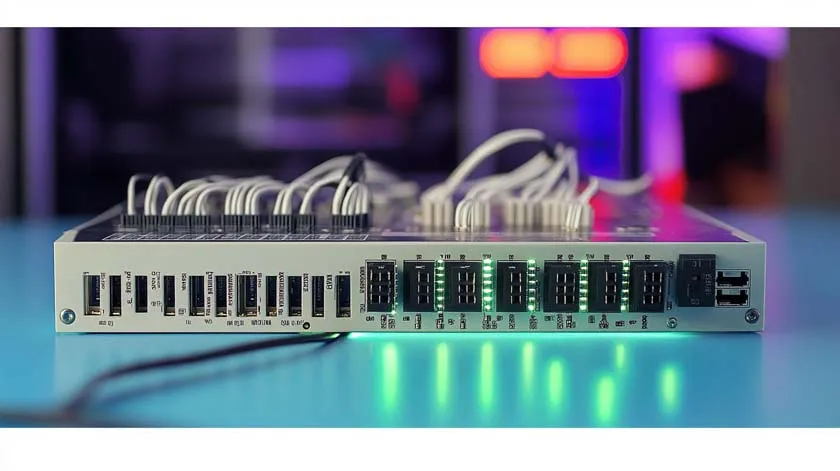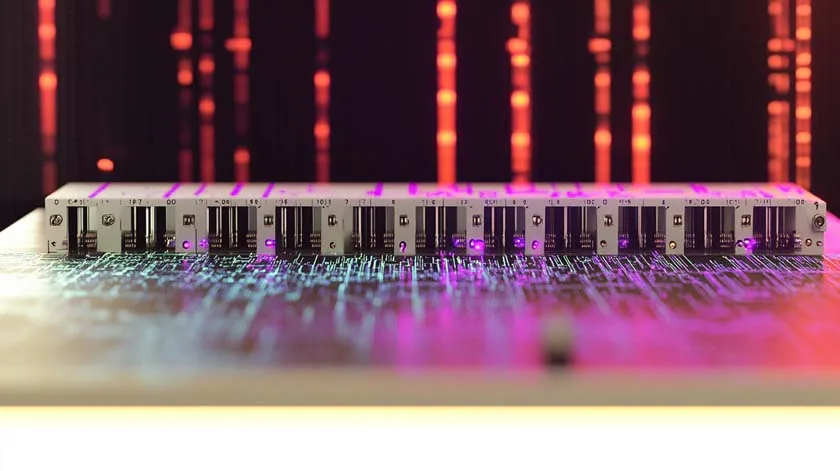With the rapid development of fiber optic communication technology, optical-electrical conversion devices play a crucial role in modern communication networks. The 1.25G-10G OEO (Optical-Electrical-Optical) converter developed by HTF, with its excellent performance and flexible applications, has become a key component in modern optical transmission networks, particularly demonstrating high adaptability in CWDM (Coarse Wavelength Division Multiplexing) and DWDM (Dense Wavelength Division Multiplexing) networks.
The Working Principle of the OEO Converter
An OEO converter is a repeater device used in fiber optic communication systems, and its primary function is to amplify, retransmit, and convert optical signals through an optical-electrical-optical process. This process includes three key steps:
1. Converting Optical Signal to Electrical Signal (O to E): When the optical signal enters the OEO converter, it is first converted into an electrical signal by a photodetector. This step helps process and regenerate the signal after long-distance transmission.
2. Electrical Signal Processing: Through the OEO converter’s built-in 3R functionality (Re-amplification, Re-shaping, and Re-timing), the electrical signal is enhanced and restored to its original integrity. Especially after long-distance transmission, the signal may experience degradation due to attenuation, noise, or other interference, and the 3R function can reshape and accurately re-time the signal.
3. Converting Electrical Signal to Optical Signal (E to O): The processed electrical signal is then converted back to an optical signal through an electro-optical modulator and sent to the fiber optic network with renewed strength and wavelength.
This optical-electrical-optical signal conversion method greatly extends the transmission distance of optical signals while ensuring their quality. In fiber optic communication networks, OEO converters are often used as repeaters or wavelength converters, helping to enhance the scalability and flexibility of the network.
Applications of the 1.25G-10G OEO Converter in CWDM and DWDM Networks
CWDM and DWDM technologies increase the capacity and transmission efficiency of networks by combining multiple wavelengths of optical signals into a single fiber for transmission. HTF’s 1.25G-10G OEO converter is specifically designed for these networks and is particularly suited for the following scenarios:
1. Wavelength Conversion: In CWDM and DWDM networks, different devices may need to communicate on different wavelengths. HTF’s OEO converter can convert incoming optical signals to a specified CWDM/DWDM wavelength, enabling seamless interconnection between devices on different wavelengths.
2. Repeater Function: As optical signals degrade over long distances, the OEO converter serves as a repeater, using its 3R function to re-amplify, reshape, and re-time the signal, restoring its integrity and extending the transmission distance. This function is especially important for long-distance transmissions across cities or countries.
3. Transparent Data Channel: HTF’s SFP+ transponder module can convert transparent data channels to corresponding CWDM or DWDM wavelengths without affecting the structure and content of the data itself. This enables the network to support various data formats and protocols, including Ethernet, SDH, OTN, and more.
Compatibility of the SFP+ Module with HT6000 Series Chassis
HTF’s 1.25G-10G OEO converter’s SFP+ module is specifically designed for use with its HT6000 series CH04, CH08, and CH20 chassis. These chassis are known for their modular design and high-density integration, supporting up to 20 SFP+ modules in limited space, greatly enhancing network deployment flexibility and scalability.
This design allows operators and enterprises to flexibly expand network capacity based on their needs without requiring extensive infrastructure changes. In addition, HTF’s SFP+ transponder modules not only offer powerful features but also boast low power consumption and long lifespan, reducing operational costs while enhancing network reliability.
HTF has been deeply involved in the fiber optic communication field for many years, earning an excellent reputation through its outstanding technological capabilities and continuous innovation. To date, the company has won over 200 industry awards and accolades, which fully demonstrate HTF’s excellent performance and leading position in the optical communication field.
HTF not only leads the industry in terms of technical strength but has also accumulated over 120 independent intellectual property rights, providing strong protection in the highly competitive market. These intellectual properties also reflect HTF’s deep expertise in technology development.
Notably, HTF holds more than 160 invention patents, covering key areas of fiber optic transmission. These patents showcase the company’s commitment to continuous innovation in research and development, as well as its strong foundation in technology.
In conclusion, HTF, with its extensive experience and robust technology in fiber optic communication, has become an indispensable leader in the industry. HTF’s 1.25G-10G OEO converter, with its broad application range, excellent performance, and compatibility with the HT6000 series chassis, will continue to drive the development of CWDM and DWDM networks, providing stable and efficient optical communication solutions to global customers.






